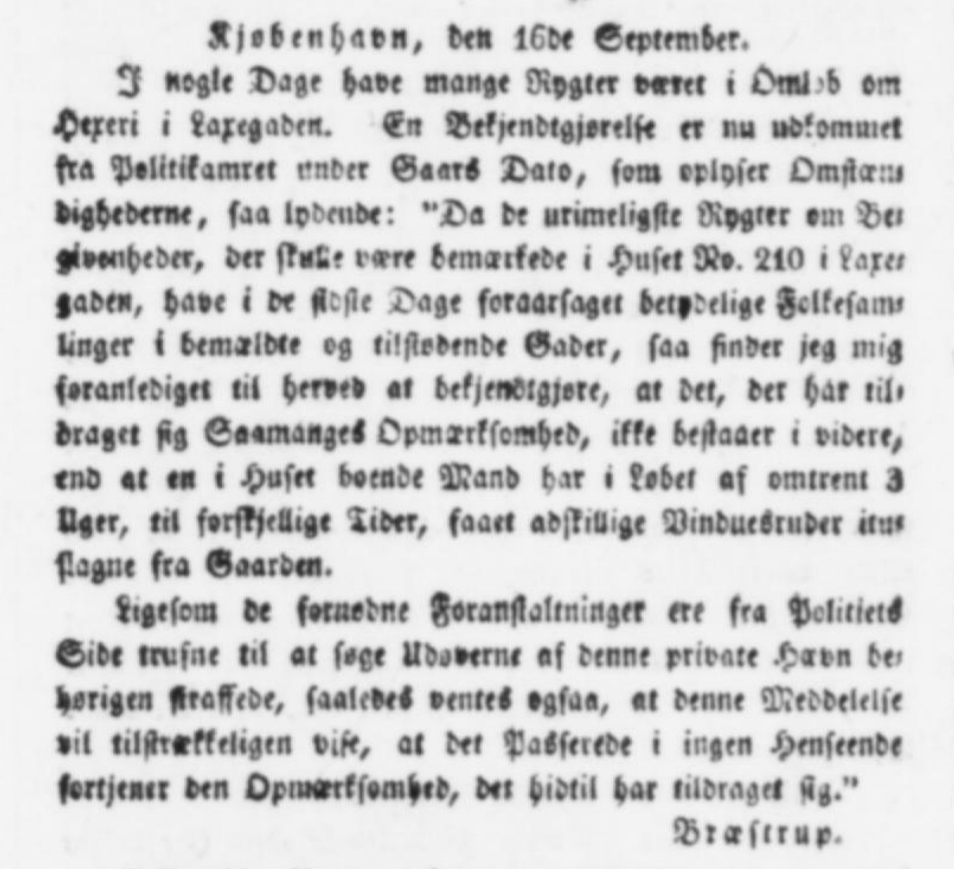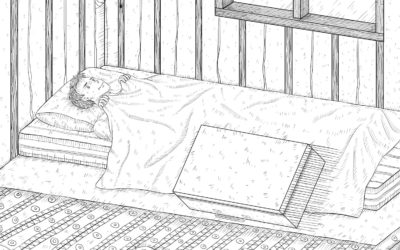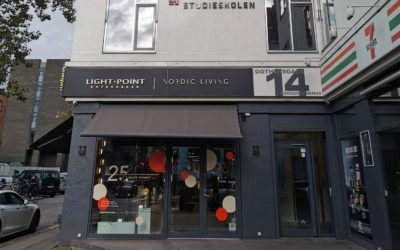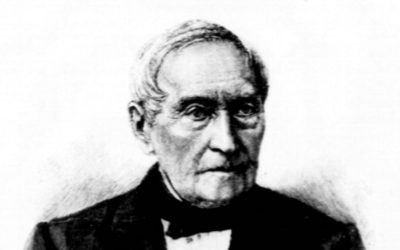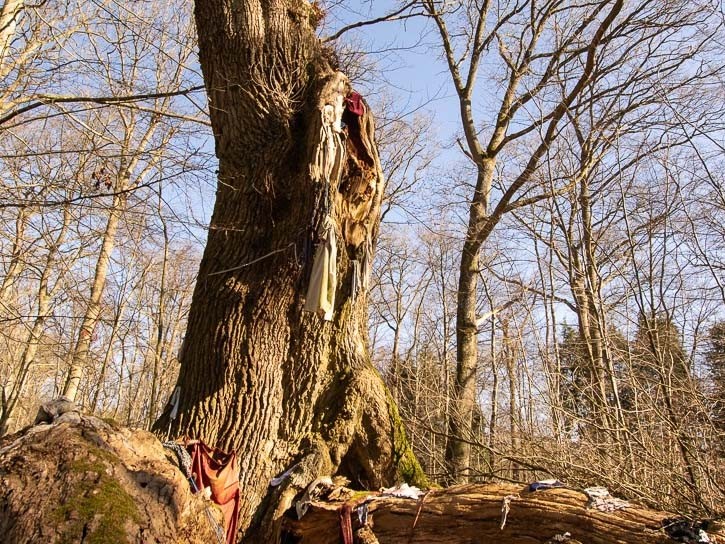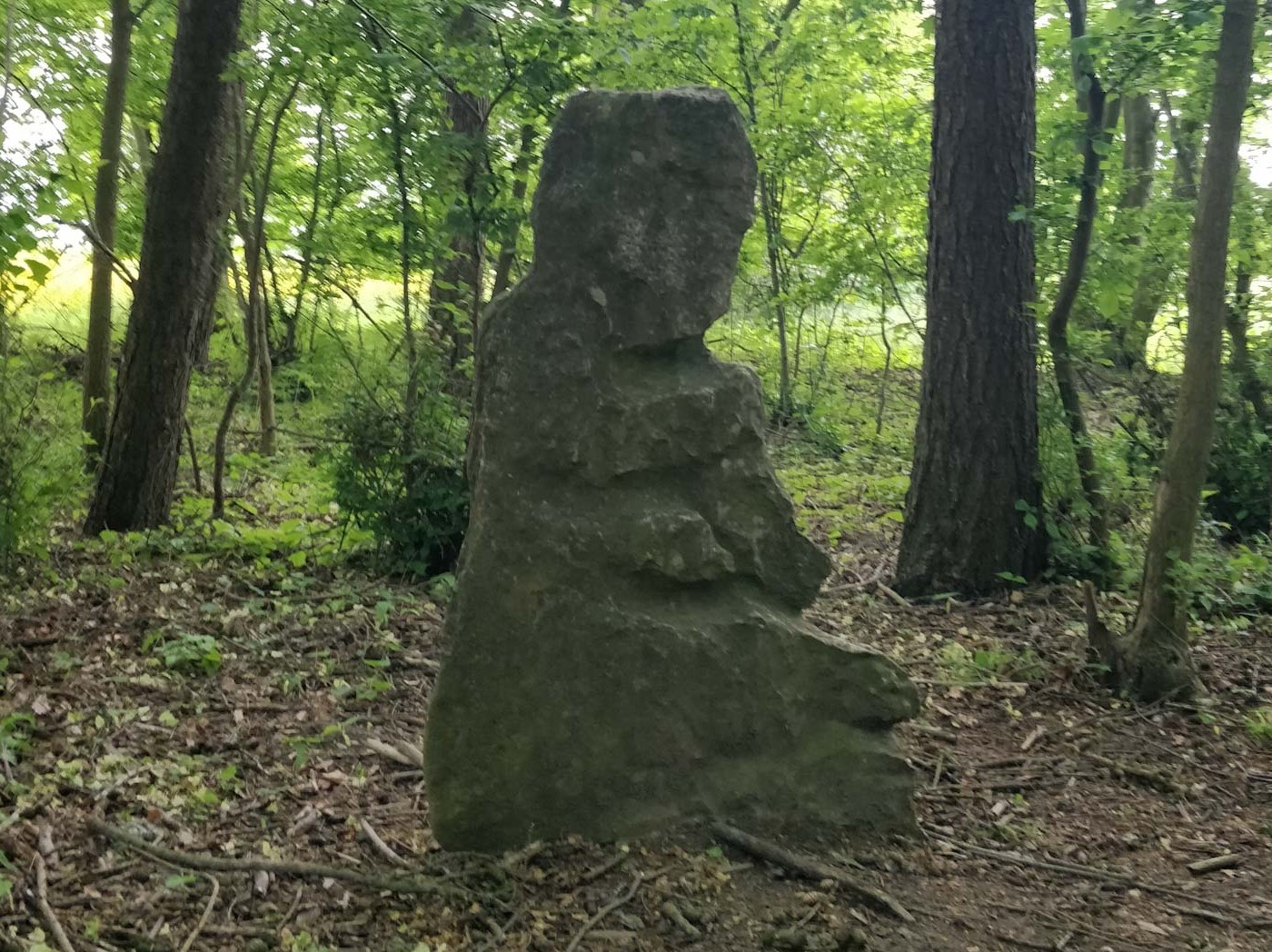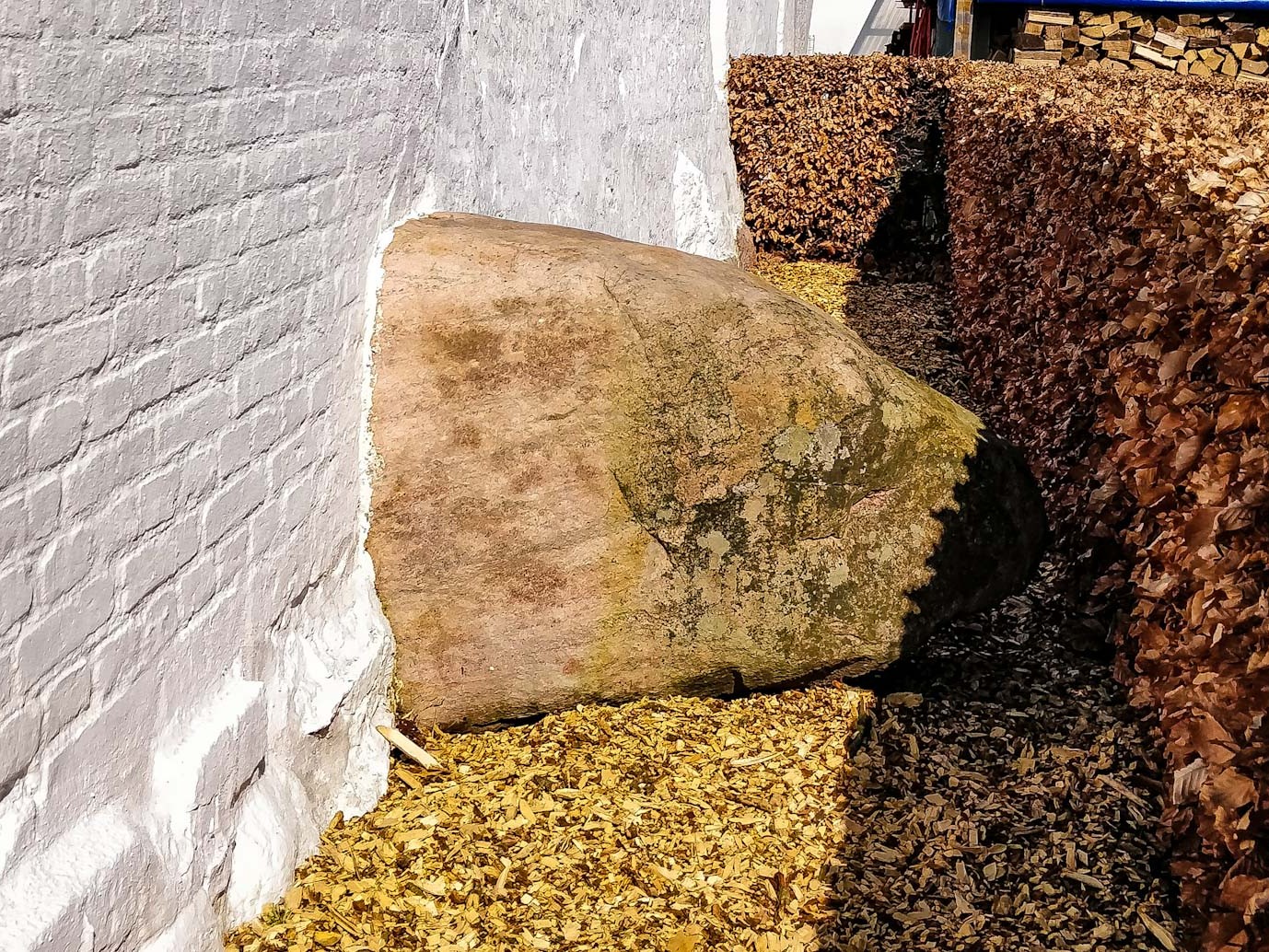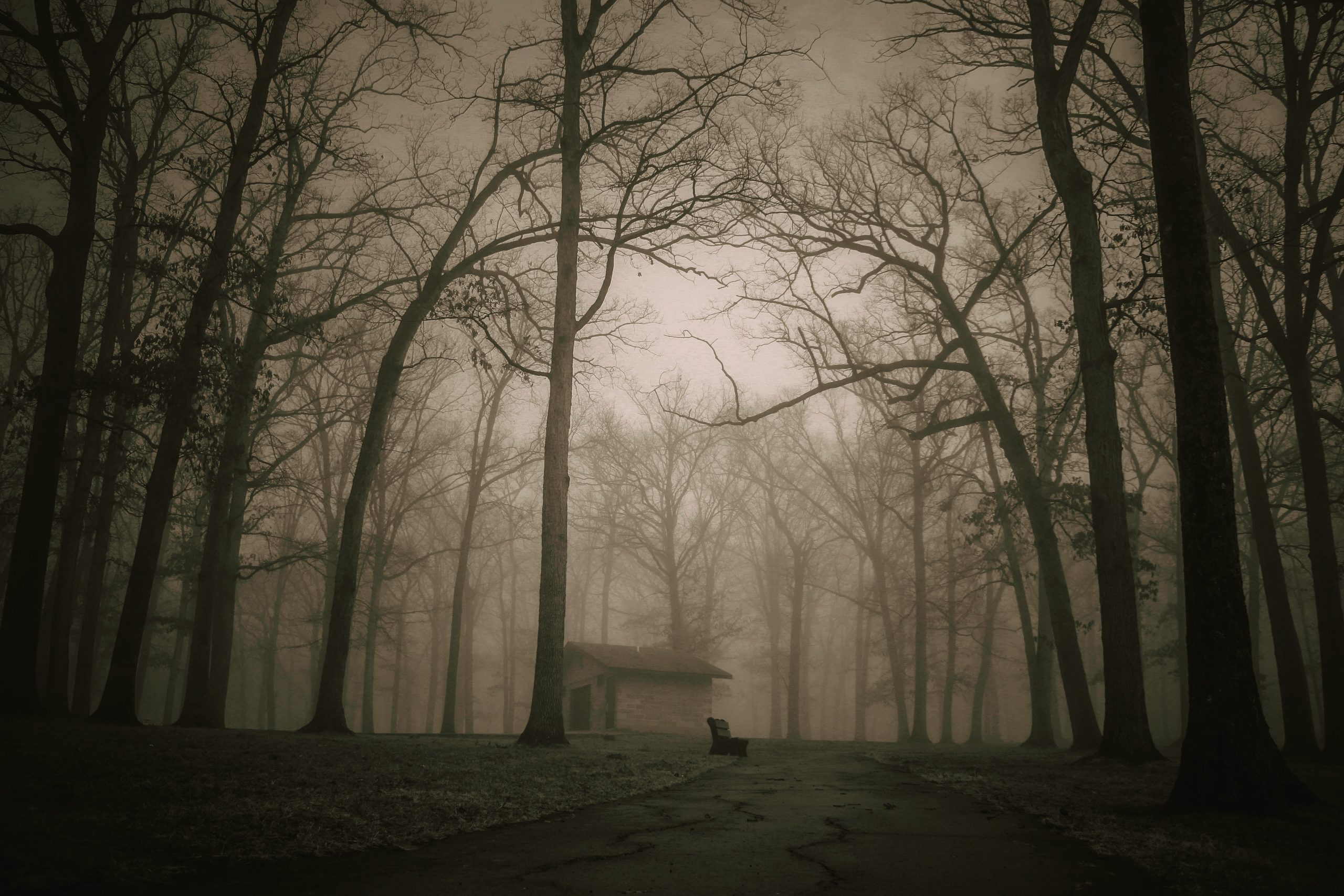Where: The house used to be around the current Laksegade no. 9 or 11, but is long gone. The address was then no. 210 (GPS 55.6778910, 12.5840640)
When: September, 1826
Good To Know:
Similar cases: The Gothersgade Poltergeist, The Ny Toldbodgade Poltergeist, The Vognmagergade Haunting
About The Episode
Over the course of several weeks during September, 1826, a house located on Laksegade (Salmon Street) no. 210 in the center of Copenhagen, seemingly became the epicenter of extreme poltergeist activity. It all started one night in the beginning of the month, when suddenly all of the building’s residents fled outside in a complete panic. From the street they would observe their home develop into a state of total chaos. The message soon spread, and citizens throughout Copenhagen flocked to see what the fuss was all about. Witnesses would later describe windows being smashed and potatoes, cutlery, and firewood flying through the air, as if thrown by an enormous, unseen force. Loud bursts of harsh and scary laughter, swearing and cursing, could also occasionally be heard throughout the street. Some witnesses even claimed to have heard growls like those of a wild animal, and seen large red eyes glowing behind the windows of the house.
The police soon interfered. Officers were assigned to regular stake-outs in the hope of catching those responsible. After a week or so, on the 15th of September and the following days, a public statement was released and printed in most major newspapers. It noted that the recent commotion about Laksegade 210 was completely out of proportions to what actually had taken place. It was true that a resident of the house had experienced several of his windows being smashed from the outside, at different times, but that was all there was to it. Nevertheless, things apparently kept on happening at the house for a while after, each time escaping the long arm of the law.
The incident created a swarm of associated rumors that quickly spread, some slightly ominous. For example, an elderly female resident was said to have assumed responsibility for the events, believing she had called forth The Evil One by accident, while consulting her Cyprianus earlier in the day. Downright silly episodes also followed, such as a note found stuck in a potato, written by “The Devil”, announcing that he had left the city for a few days to visit a market in the city of Roskilde.
The Laksegade incident captured the imagination of Danish folk and popular culture for a long time after the disturbances had stopped. Plays, satires, books etc. made countless references to the events that transpired as well as the public reaction to it. It also created the famous catchphrase: “The Devil is Loose in Salmon Street” – meaning something similar to “shit hitting the fan”. The expression still lives on to this day, although the details of what is said to have transpired Laksegade events are no longer common knowledge.
Commentary
There are many conflicting anecdotes and testimonies surrounding this classic case, and no doubt many are completely fabricated. But what really happened then? After weeks of nationwide coverage it was proposed, somewhat to the public’s satisfaction, that the commotion at Laksegade was simply a mischievous plan cooked up by a group of pranksters. Another popular theory was that the event had been staged by a chicken farmer, as revenge for his girlfriend who had been treated unfairly by a family living there. Attention was also directed towards a local ventriloquist at some point, especially because he was known to be a bit of a trickster. In the end, however, none of the aforementioned explanations could be properly substantiated and the case has so far never been resolved. What can be said is that the case fits nearly into a series of similar events in the area, such as the 1779 Gothersgade and the 1886-87 Ny Toldbodgade incidents. All these cases have been “too big to ignore”. It makes you wonder how many others of the kind have taken place throughout the years, but either were never reported, or got lost in the fog of history.
Select sources
- J. Davidsen – Fanden i Laksegade, Spøgeriet i Gothersgade
- Lars Thomas – Det Mystiske Danmark
- S. von Huth – Spiritisme Kontra Materialisme
Tags
in the same category…
The Vognmagergade Haunting
During the late 1880’s, an unexplained force appears to have terrorized several residents living in a house on Vognmagergade, Central Copenhagen.
The Gothersgade Poltergeist
Gothersgade 14 was once the address of one of the most spectacular Danish hauntings/poltergeist episodes, involving some well known and respected Copenhagen personalities.
The case at one point reached the highest instances of the Danish judicial system
The Ny Toldbodgade Poltergeist
Starting in late 1886 and continuing into spring of 1887, a well-regarded and influential family started experiencing strong poltergeist activity in their home on Toldbodgade.


